package thread;
//创建一个类,继承自Thread
class MyThread extends Thread{
@Override
public void run() {
//这个方法是线程的入口方法
while (true) {
System.out.println("hello thread");
}
}
}
//创建线程
public class Demo1 {
public static void main(String[] args){
Thread t = new MyThread();
//start和run都是Thread的成员
// run只是描述了线程的入口(线程要做什么任务)
// start则是真正调用了系统API,在系统中创建线程,让线程再调用run
t.start();
while(true){
System.out.println("hello main");
}
}
}
两处while(true),这两处while同时执行,看到的结果是交替打印。
每个线程,都是一个独立执行的逻辑。(独立执行流)
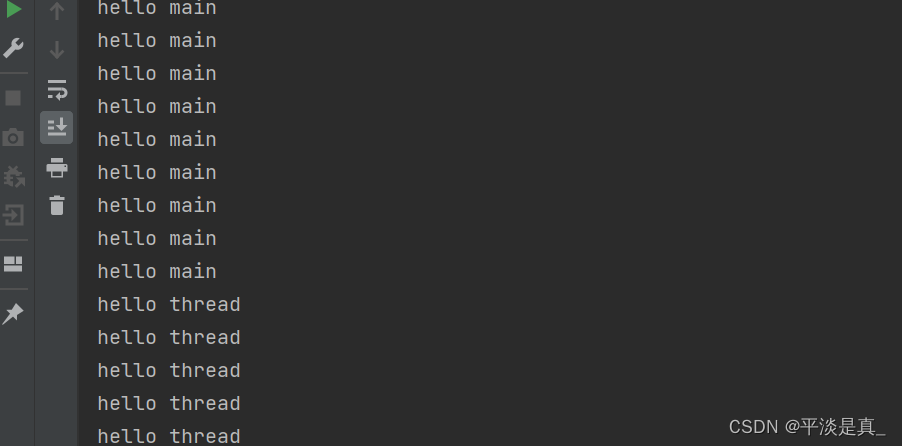
public class Demo1 {
public static void main(String[] args){
Thread t = new MyThread();
//start和run都是Thread的成员
// run只是描述了线程的入口(线程要做什么任务)
// start则是真正调用了系统API,在系统中创建线程,让线程再调用run
t.run();
while(true){
System.out.println("hello main");
}
}
}把t.start改成t.run,此时,代码中不会创建新的线程。只有一个主线程。这个主线程里面只能一次执行循环,执行完一个在执行另一个。
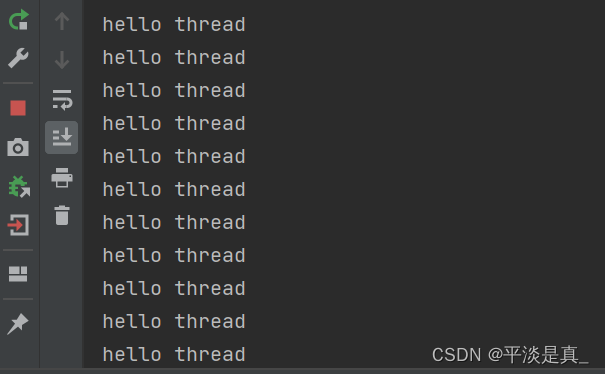
jconsole.exe
1.启动之前,确保idea程序已经跑起来。
2.可能需要使用管理员方式运行。
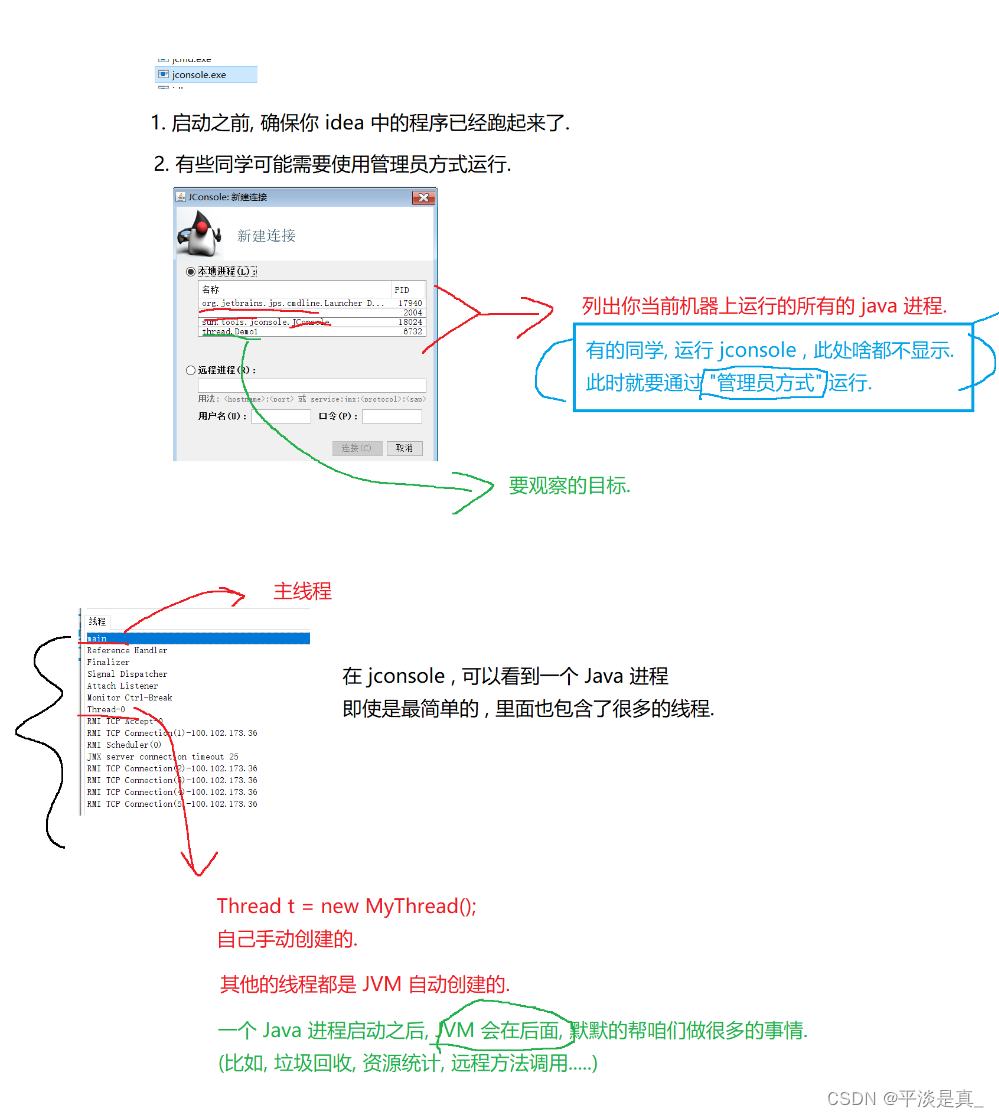
在jconsole可以看到一个java进程,即使是最简单的,也包含了很多线程。
jvm会自动创建线程。
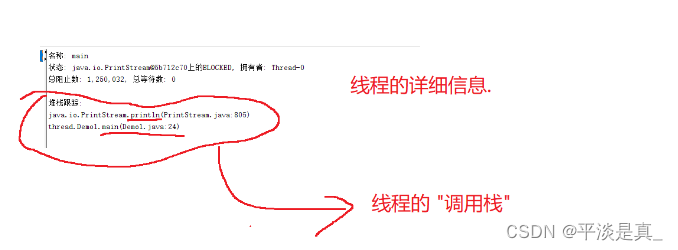
线程的详细信息
在循环体里加入sleep,是Thread的静态方法(类方法)

Thread类的其他用法
创建线程,其他的写法
1.继承Thread,重写run
package thread;
//创建一个类,继承自Thread
class MyThread extends Thread{
@Override
public void run() {
//这个方法是线程的入口方法
while (true) {
System.out.println("hello thread");
try {
Thread.sleep(1000);
} catch (InterruptedException e) {
e.printStackTrace();
}
}
}
}
//创建线程
public class Demo1 {
public static void main(String[] args) throws InterruptedException {
Thread t = new MyThread();
//start和run都是Thread的成员
// run只是描述了线程的入口(线程要做什么任务)
// start则是真正调用了系统API,在系统中创建线程,让线程再调用run
t.start();
while(true){
System.out.println("hello main");
Thread.sleep(1000);
}
}
}
2.实现Runnable,重写run
package thread;
class MyRunnable implements Runnable{
@Override
public void run(){
System.out.println("hello thread");
try {
Thread.sleep(1000);
} catch (InterruptedException e) {
e.printStackTrace();
}
}
}
public class Demo2 {
public static void main(String[] args) throws InterruptedException {
Runnable runnable =new MyRunnable();
Thread t =new Thread(runnable);
t.start();
while(true){
System.out.println("hello main ");
Thread.sleep(1000);
}
}
}
Runnable表示一个“可以运行的任务”。使用runna的写法,和直接继承Thread之间的区别,主要是解耦合。
创建一个线程,需要进行两个关键操作:
1.明确线程要执行的任务
2.调用系统api,创建出线程。
3.继承Thread,重写run,使用匿名内部类
package thread;
public class Demo3 {
public static void main(String[] args) throws InterruptedException {
Thread t = new Thread(){
@Override
public void run(){
while (true){
System.out.println("hello thread");
try {
Thread.sleep(1000);
} catch (InterruptedException e) {
e.printStackTrace();
}
}
}
};
t.start();
while(true){
System.out.println("hello main");
Thread.sleep(1000);
}
}
}
package thread;
public class Demo4 {
public static void main(String[] args) throws InterruptedException {
Runnable runnable = new Runnable() {
@Override
public void run() {
while(true){
System.out.println("hello thread");
try {
Thread.sleep(1000);
} catch (InterruptedException e) {
e.printStackTrace();
}
}
}
};
Thread t = new Thread(runnable);
t.start();
while (true){
System.out.println("hello main");
Thread.sleep(1000);
}
}
}
4.基于lambda表达式
package thread;
public class Demo5 {
public static void main(String[] args) throws InterruptedException {
Thread t= new Thread(()->{
while (true){
System.out.println("hello thread");
try {
Thread.sleep(1000);
} catch (InterruptedException e) {
e.printStackTrace();
}
}
}
);
t.start();
while(true){
System.out.println("hello main");
Thread.sleep(1000);
}
}
}
package thread;
public class Demo6 {
public static void main(String[] args){
Thread t = new Thread(()->{
while (true){
System.out.println("hello thread");
try {
Thread.sleep(1000);
} catch (InterruptedException e) {
e.printStackTrace();
}
}
},"这是新线程");
//设置t为后台线程
t.setDaemon(true);
t.start();
}
}
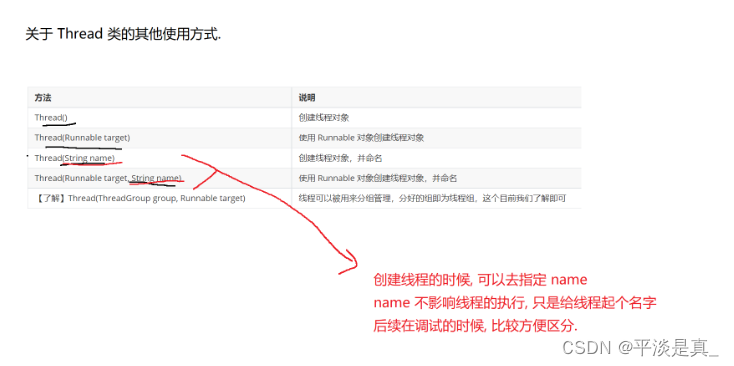
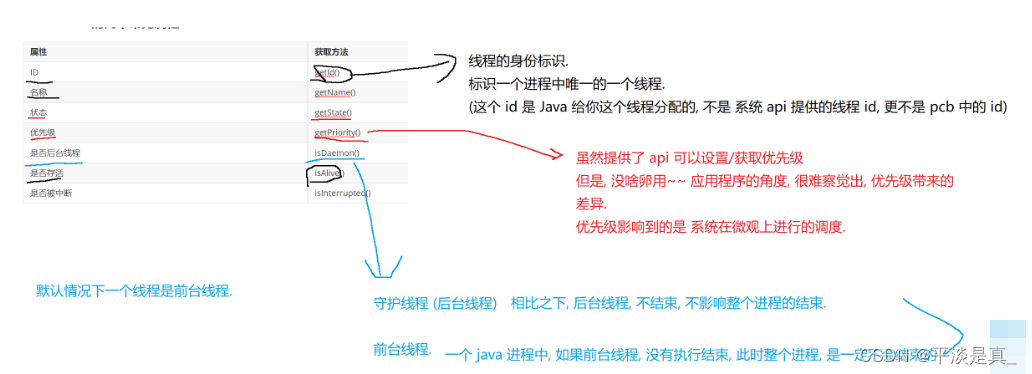

package thread;
public class Demo7 {
public static void main(String[] args) throws InterruptedException {
Thread t = new Thread(()->{
System.out.println("线程开始");
try {
Thread.sleep(2000);
} catch (InterruptedException e) {
e.printStackTrace();
}
System.out.println("线程结束");
}
);
t.start();
System.out.println(t.isAlive());
Thread.sleep(3000);
System.out.println(t.isAlive());
}
}






















 3万+
3万+











 被折叠的 条评论
为什么被折叠?
被折叠的 条评论
为什么被折叠?








